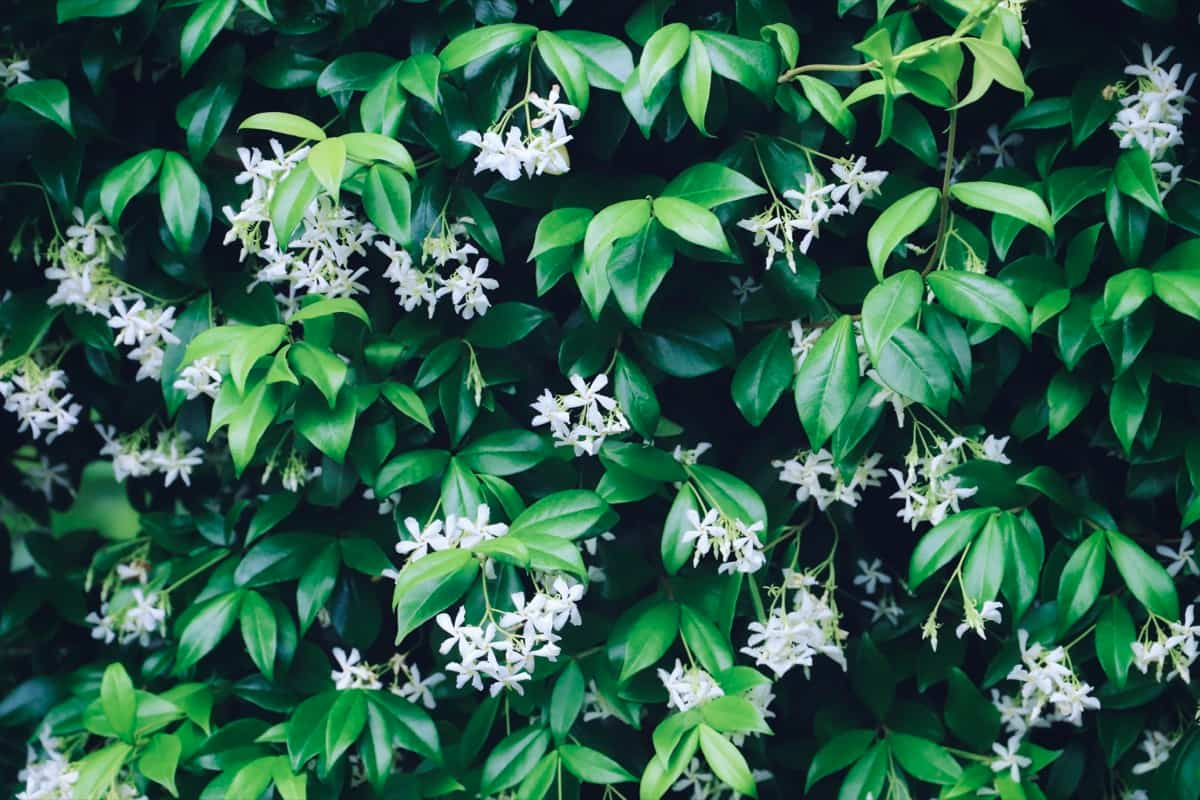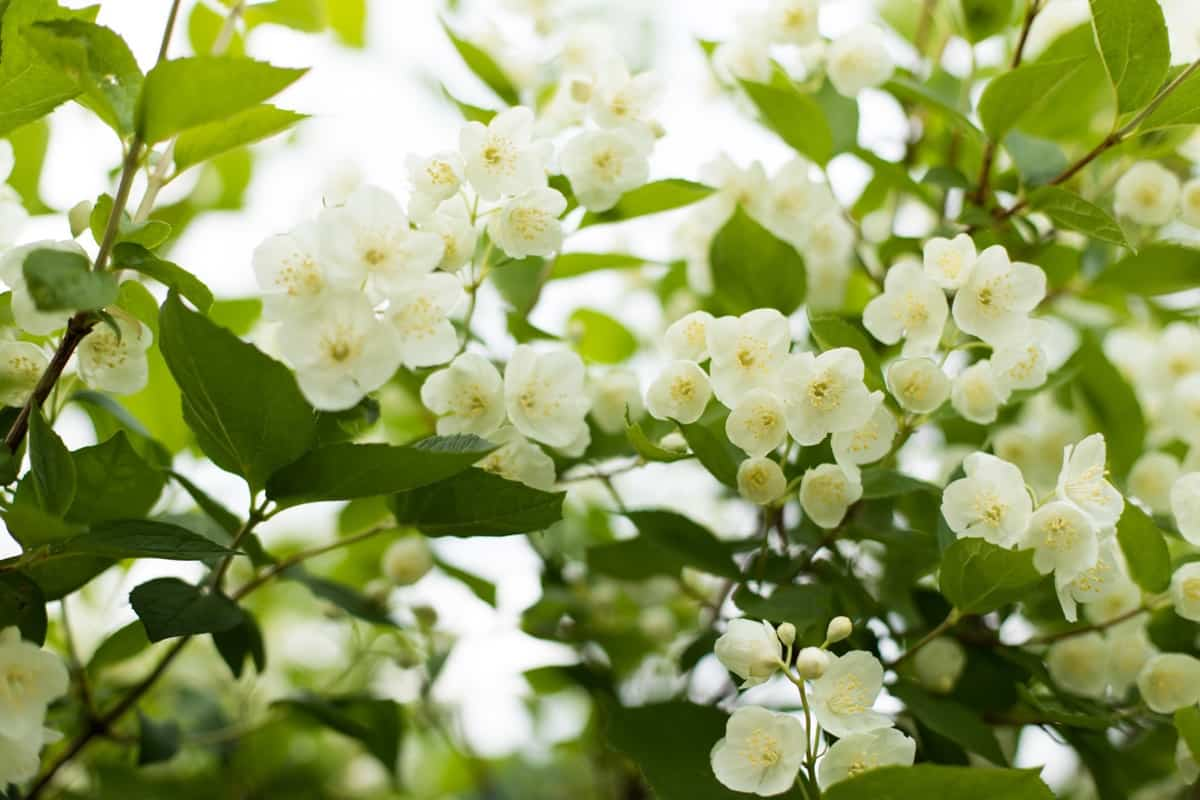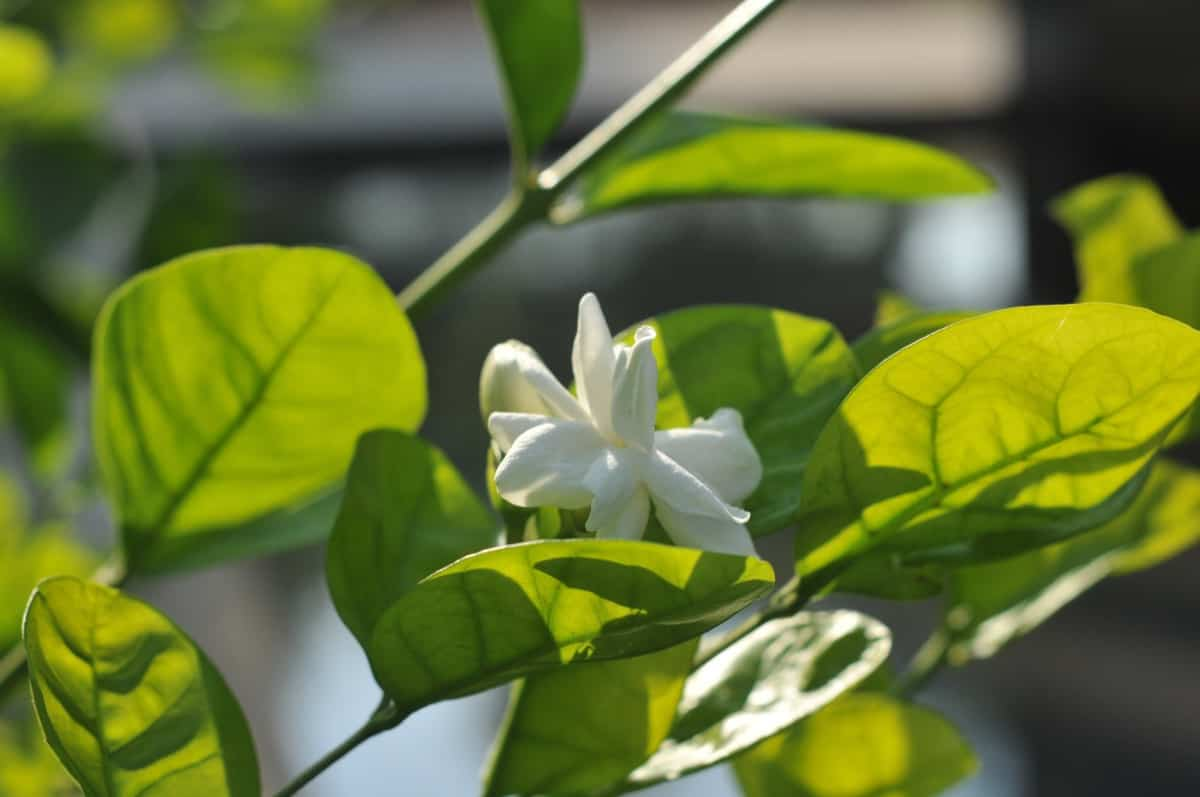Welcome to our blog post on Common Jasmine Plant Diseases! Jasmines, with their attractive blooms and numerous varieties, are nice additions to gardens, but like any plant, they can contract a range of common diseases that can hinder their beauty and health. This blog post aims to discuss 10 of the most common jasmine diseases, including their symptoms, treatments, prevention, and management. So, buckle up to shed some light on these jasmine plants’ ten most common diseases.

Important Points for Beginners to Identify and Manage Common Jasmine Plant Damaging Diseases
- Identifying the disease: The first step is identifying the disease infesting your jasmine plant so that you can approach it with the most effective control method.
- Regular Monitoring: Monitor your Jasmine plants regularly for signs of diseases. This will help you to identify an infestation early when it is easier to control.
- Sanitation: Remove the infected plant debris and burn them.
- Natural Control: Several natural control methods can help to manage diseases. These include plant extracts, essential oils, composting, and organic fungicides.
- Chemical Control: If natural controls are ineffective, use fungicides as a last resort, and follow the label instructions and dosage carefully.
Phyllody Disease in Jasmine Plant
Disease Symptoms by Phytoplasma: Phytoplasma are bacteria-like microorganisms that infect plant phloem tissue. Infected plants show abnormal floral development, where petals, stamens, and pistils are transformed into leaf-like structures, greenish flower clusters, excessive branching, bushy appearance, discoloration, and stunted growth.
Survival and Spread: Phytoplasma prefers a warm environment of 20-30°C for dispersal. They are primarily transmitted by insect vectors, mainly leafhoppers, and planthoppers. Weeds act as reservoirs allowing them to survive and multiply.
Treatment, maintenance, and Control Measures: Spray carbaryl, methomyl, imidacloprid, thiamethoxam, malathion, and chlorpyrifos.
Collar Rot Disease in Jasmine Plant
- Disease Symptoms by Sclerotium rolfsii: The lower stem develops lesions or cankers at the collar region, causing decay, rotting, and girdling of the collar region. Infected plants often show signs of wilting, chlorosis, stunted growth, and death.
- Survival and Spread: Sclerotium rolfsii prefer warm temperatures and moist conditions of 25-30°C and 80% humidity for their growth and reproduction. Plant stress, overwatering, poor drainage, poor structure, acidic to neutral soil (pH 5.5 to 7), or plant debris can contribute to the disease.
- Treatment, Maintenance, and Control Measures: Spray carbendazim, metalaxyl, propiconazole, tebuconazole, copper oxychloride, azoxystrobin, and thiophanate-methyl.
Rust Disease in Jasmine Plant
- Disease Symptoms by Puccinia spp.: The first noticeable symptom is the appearance of rusty or reddish-brown bumps on the stem, leaves, and flowers. The infected leaves show chlorosis, wilting, premature defoliation, and spore dispersal.
- Survival and Spread: Puccinia spp prefers a mildly warm and humid climate of 15-25°C and >75% humidity. Prolonged leaf wetness, dense canopy, overhead irrigation, and poor airflow contribute to the disease.
- Treatment, Maintenance, and Control Measures: Spray copper hydroxide, copper oxychloride, copper sulfate, azoxystrobin, thiophanate-methyl, propiconazole, tebuconazole, chlorothalonil, sulfur, and mancozeb.
Powdery Mildew Disease in Jasmine Plant
- Disease Symptoms by Erysiphe cichoracearum: The characteristic symptom of the disease is the white or grayish powdery fungal growth on the leaves, stems, and flowers. Infected leaves show a powdery or dusty appearance, distortion, stunted growth, chlorosis, curling, and drop prematurely. Infected flowers will fail to open properly.
- Survival and Spread: Erysiphe cichoracearum prefers moderate temperatures, high humidity of 15-25°C, and >60% humidity for growth and reproduction. Prolonged leaf wetness, poor airflow, shade, plant stress, and dense canopy create an ideal environment.
- Treatment, Maintenance, and Control Measures: Spray myclobutanil, tebuconazole, propiconazole, sulfur, azoxystrobin, chlorothalonil, and mancozeb.
Southern Blight Disease in Jasmine Plant
- Disease Symptoms by Sclerotium rolfsii: Infected stems may appear water-soaked, turn brown, and eventually collapse. A white mycelial growth may be visible on the infected tissues as the disease advances. The affected parts can expand and girdle the stems, leading to wilting and dieback.
- Survival and Spread: Sclerotium rolfsii prefers warm and humid climates of 25-35°C and >80% humidity for reproduction and survival. Prolonged leaf wetness, dense canopy, overwatering, plant debris, and poor airflow provide an ideal environment for the pathogen to thrive and reproduce.
- Treatment, Maintenance, and Control Measures: Spray thiophanate-methyl, carbendazim, flutolanil, mancozeb, chlorothalonil, and iprodione.
In case you missed it: Common Pests in Jasmine: Identifying, Symptoms, Treating, and Management

Alternaria Leaf Spot Disease in Jasmine Plant
- Disease Symptoms by Alternaria jasmini and Alternaria altenata: The lesions are water-soaked and dark brown to black with a concentric ring pattern, gray or brown center, and a light brown or black border. The affected plants show leaf chlorosis, defoliation, spotting, blighting, and stem and petiole dieback symptoms.
- Survival and Spread: Alternaria spp prefers a warm and humid climate of 20-30°C and >60% humidity for spore production. Overcrowding, poor air circulation, plant stress, overhead irrigation, plant debris, and prolonged leaf wetness contribute to disease spread.
- Treatment, Maintenance, and Control Measures: Spray chlorothalonil, thiophanate-methyl, carbendazim, copper oxychloride, mancozeb, azoxystrobin, propiconazole, and tebuconazole.
Cercospora Leaf Spot Disease in Jasmine Plant
- Disease Symptoms by Cercospora jasminecola: The characteristic symptom is the development of water-soaked leaf spots of a grayish center with a yellow halo around them. Infected plants show leaf chlorosis, defoliation, discoloration, and spore dispersal.
- Survival and Spread: Cercospora jasminecola prefers warm and humid weather of 20-30°C and >70% humidity for their growth and development. Prolonged leaf wetness, poor air circulation, and plant debris create a conducive environment for the disease.
- Treatment, Maintenance, and Control Measures: Spray chlorothalonil, carbendazim, copper sulfate, copper oxychloride, mancozeb, azoxystrobin, tebuconazole, propiconazole, and hexaconazole.
Botrytis Stem Blight or Grey Mold Disease in Jasmine Plant
- Disease Symptoms by Botrytis cinerea: The characteristic symptom is the water-soaked lesions on the stems. Infected areas turn brown or grayish, soft, and mushy. Infected plants show leaf blight, flower blight, and a grayish-brown fuzzy fungal growth.
- Survival and Spread: Botrytis cinerea prefers moderate temperatures, high humidity of 15-25°C, and >85% humidity for spore germination and infection. Prolonged Leaf Wetness, plant debris, plant stress, overcrowding, and limited air circulation contribute to the disease.
- Treatment, Maintenance, and Control Measures: Spray chlorothalonil, mancozeb, benomyl, thiophanate methyl, iprodione, vinclozolin, azoxystrobin, tebuconazole, propiconazole, and hexaconazole.
Fusarium Wilt Disease in Jasmine Plant
- Disease Symptoms by Fusarium oxysporum: The primary symptom is the wilting of the plant. Infected plants show leaf wilting, discoloration, chlorosis, vascular browning, stunted growth, and death.
- Survival and Spread: Fusarium oxysporum prefers warm and moist soil of 25-30°C for its survival and growth. They prefer acidic soils with a pH range of 5.5 to 7.5. Plant stress, high soil moisture, plant debris, crop residues, and dense canopy create an ideal environment for the disease’s spread.
- Treatment, Maintenance, and Control Measures: Spray bordeaux mixture, metalaxyl, carbendazim, captan, thiram, thiophanate-methyl, propiconazole, and azoxystrobin.
Root Rot Disease in Jasmine Plant
- Disease Symptoms by Sclerotium rolfsii: The roots of affected plants show signs of decay, girdling, constriction, and discoloration. They become rotted and have a foul odor. Infected leaves show signs of chlorosis, wilting, and stunted growth.
- Survival and Spread: Sclerotium rolfsii prefers warm and moist soil of 20-30°C and >80% humidity for spore germination and infection. They prefer marginally acidic to neutral soil pH of 6 to 7. Excessive soil moisture, poor drainage, crop residues, and plant debris provide a conducive environment for the fungus to grow.
- Treatment, Maintenance, and Control Measures: Spray thiophanate-methyl, benomyl, iprodione, fludioxonil, azoxystrobin, tebuconazole, difenoconazole, copper oxychloride, carbendazim, chlorothalonil.
In case you missed it: Common Cabbage Damaging Pests: Symptoms, Treatment, Prevention, and Management

Conclusion
Common jasmine plant diseases include phyllody, collar rot, rust, powdery mildew, southern blight, alternaria leaf spot, cercospora leaf spot, botrytis stem blight, fusarium wilt, and root rot. By identifying the disease, inspecting plants regularly, and using natural control methods, you can help to keep your jasmine plants healthy and beautiful.
- Types of Fungicides Used in Agriculture
- Common Issues in the Fruit Development Stage of Pomegranate Farming
- Fruit Development Issues in Papaya: Easy Solutions and Treatment
- Soil-Borne Diseases and How to Protect Your Plants
- Practices to Prevent Disease Spread in the Garden
- From Wilted to Thriving: How to Treat Root Rot Naturally in Houseplants
- Natural Remedies to Cure Brown Spots on Fig Tree Leaves
- Natural Solutions for Poinsettia Problems: 100% Effective Remedies
- How to Control Calla Lily Problems: Natural Remedies for Leaf and Flower Problems